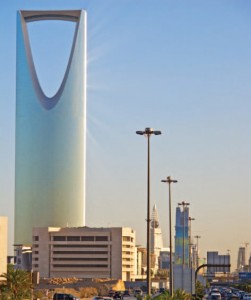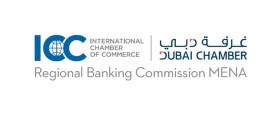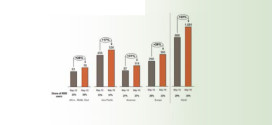
Saudi banks will cut their bad loan ratio to the lowest since the region’s biggest corporate default three years ago as lending grows on the back of government spending, according to Moody’s Investors Service.
The ratio of non-performing loans at Saudi lenders will drop to about 2.5 per cent this year, the lowest since at least 2009, Khalid Howladar, a vice-president at Moody’s, said recently.
That compares with forecasts of 8.5 per cent this year in the UAE and 4.2 per cent in the US last year, says Moody’s.
Banks in the world’s top oil exporter are lending at the fastest pace in more than three years as the government’s $514bn spending programme encourages companies, including Saudi Arabian Mining and Saudi Acrylic Monomer, to expand.
“One of the ways that banks are dealing with some of big borrowers is to insist on taking security for any loan so that there is something tangible backing that exposure.”
A pick-up in loan growth to private businesses to 14 per cent in June, the highest since March 2009, has driven up borrowing costs in the Kingdom. The yield on three-month Saudi treasury bills rose to 0.37598 per cent, the highest in almost two months, at a recent auction, according to data compiled by Bloomberg. Yields on one-month, six-month and one-year securities sold at the Kingdom’s weekly auction were unchanged.
The three-month Saudi Interbank Offered Rate, the benchmark domestic banks use to lend to each other, has jumped 17 basis points this year to 0.95 per cent in August. The advance is the biggest in the six-nation Gulf Cooperation Council in 2012 and has led to a more than doubling of the spread between Saudi and US rates to 51 basis points, data compiled by Bloomberg show.
The Kingdom’s fiscal and current account positions will return large surpluses, Samba Financial Group said in its August Saudi “Macroeconomic Forecast Update 2012-13”.
The fiscal position is expected to remain in a comfortable surplus. The anticipated reduction in government spending this year will help to offset the impact of slightly lower oil revenue (stemming from reduced prices).
Consequently, the fiscal balance is expected to be unchanged at 15 per cent of GDP. In 2013, oil output is set to edge down, but with government spending picking up once more, the surplus is expected to fall back to around eight per cent of GDP.
The current account outlook for 2012-13 is comfortable. Oil export earnings are set to come in at about $340bn, unchanged on 2011, with gains in output offsetting the slight price decline. Import spending is expected to contract slightly, helped by slightly weaker consumption and softer global commodities prices.
The resulting trade surplus will be comfortably large enough to offset the invisibles deficit (which will continue to grow) meaning that a current-account surplus of some 28 percent of GDP is in prospect for 2012.
 Cash And Trade Magazine For Cash and Trade professionals in the Middle East
Cash And Trade Magazine For Cash and Trade professionals in the Middle East




